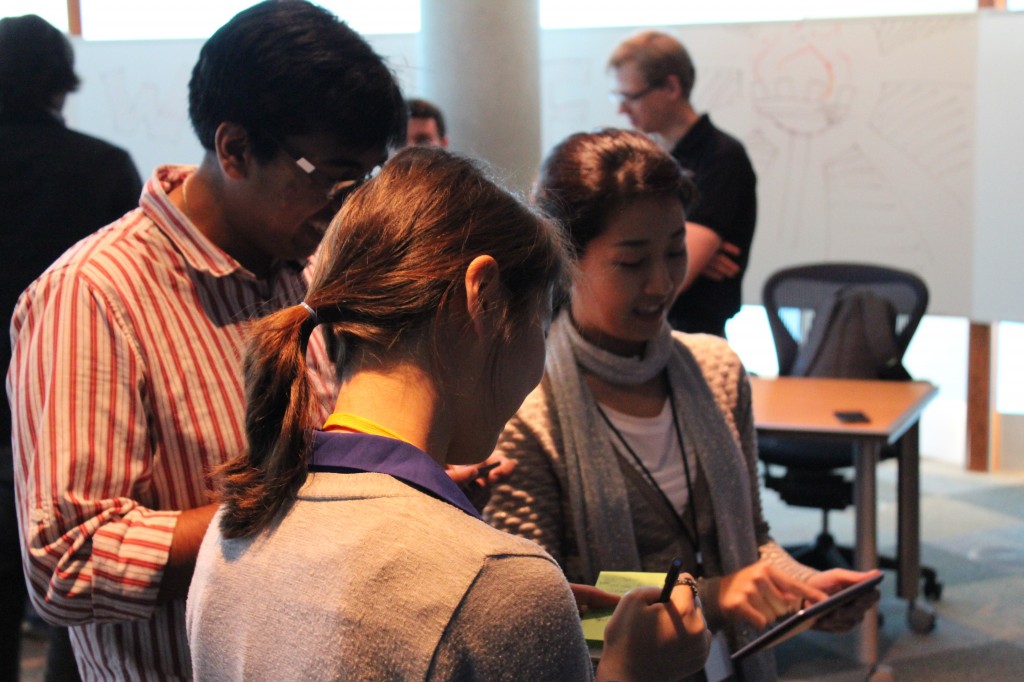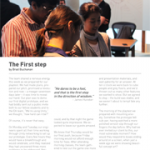“He dares to be a fool,
and that is the first step
in the direction of wisdom.”
– James Huneker
The team shared a nervous energy this week as we prepared for our playtest. We had made plans, prepared our pitch, promised a revolution and now – a meager seventeen days later – it was time to reveal our hand. Our plan was to demo our first digital prototype, and we had boldly sent out a public invite both to our fellow students and to the EA team. “We’re using Unity,” we thought, “how hard can it be?”
Of course, it’s never that easy.
On Monday and Tuesday our engineers spent all their time working through Unity networking to set up our prototype. Every few hours they would have a breakthrough and would celebrate, until they realized they had uncovered three more problems to be addressed. Networking can be tricky business.
By Wednesday we were starting to worry. The prototype was working, but it was all grey floors and grey walls and cube people. We understood the game, but our guests would not. Art started dropping temporary assets in anywhere they could, and by that night the game looked quite impressive. We expected to leave our guests amazed.
We knew that Thursday would be our final push, because Friday morning would not afford enough time for fixes. After attending morning classes, the team gathered to test out the game one more time. That’s when we realized it wasn’t working on the phones. Our engineers spent hours trying to track down the problem, then rolled back to the last working build, then spent more hours reconstructing crucial elements for our playtest. Art could only continue working on research and presentation materials, and wait patiently for an answer. At ten o’clock we were back to cube people and grey floors, and we’d thrown out so many other features we wanted to show. But we agreed to stop – the build was stable, and we weren’t about to tempt fate any further.
The morning of the playtest we prepared with mounting anxiety. Somehow the prototype felt sub-par, having watched a more polished version slip through our fingers the day before. Why had we ever invited our client to this, our most vulnerable moment? How would they respond to boxes sliding around on a screen, when just a week ago we were showing beautiful concept art?
So, somehow, it was a surprise when our guests showed up and incredible feedback started pouring in. People understood the prototype nature of our test. They picked up on what the shapes represented and got the hang of the experience faster than we expected. Best of all, some of them started to have fun! We should have known – we did invite game developers to our test, after all.
We came away from our playtest with a mountain of feedback that we will sort through next week in preparation for Quarters, but also with a new appreciation for the value of early testing. It wasn’t easy to show our game knowing that it was so incomplete, but we would have missed out on so much insight if we had not done so. If our next several playtests are half as productive as this one, then Torch is going to be a great game.


